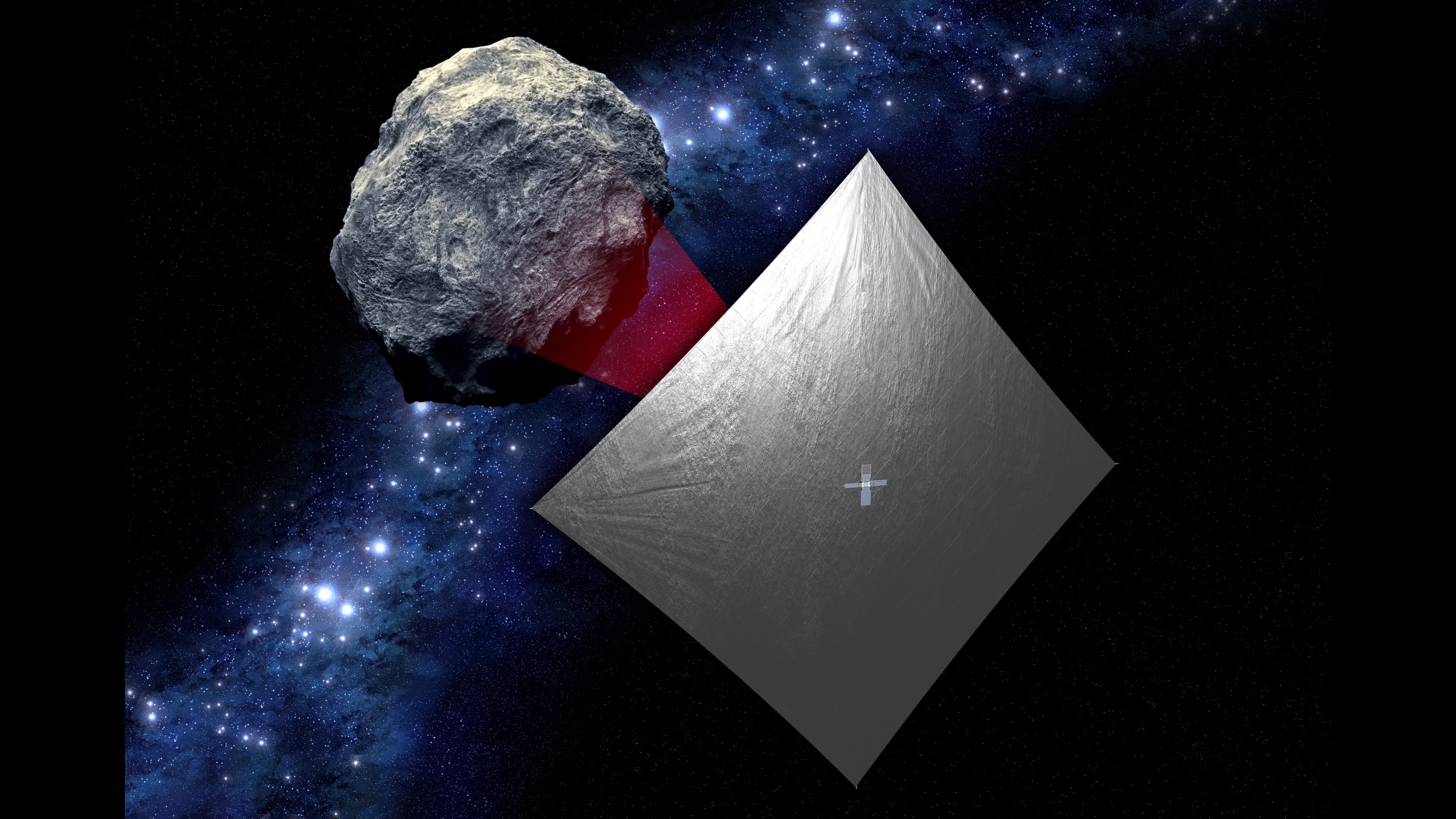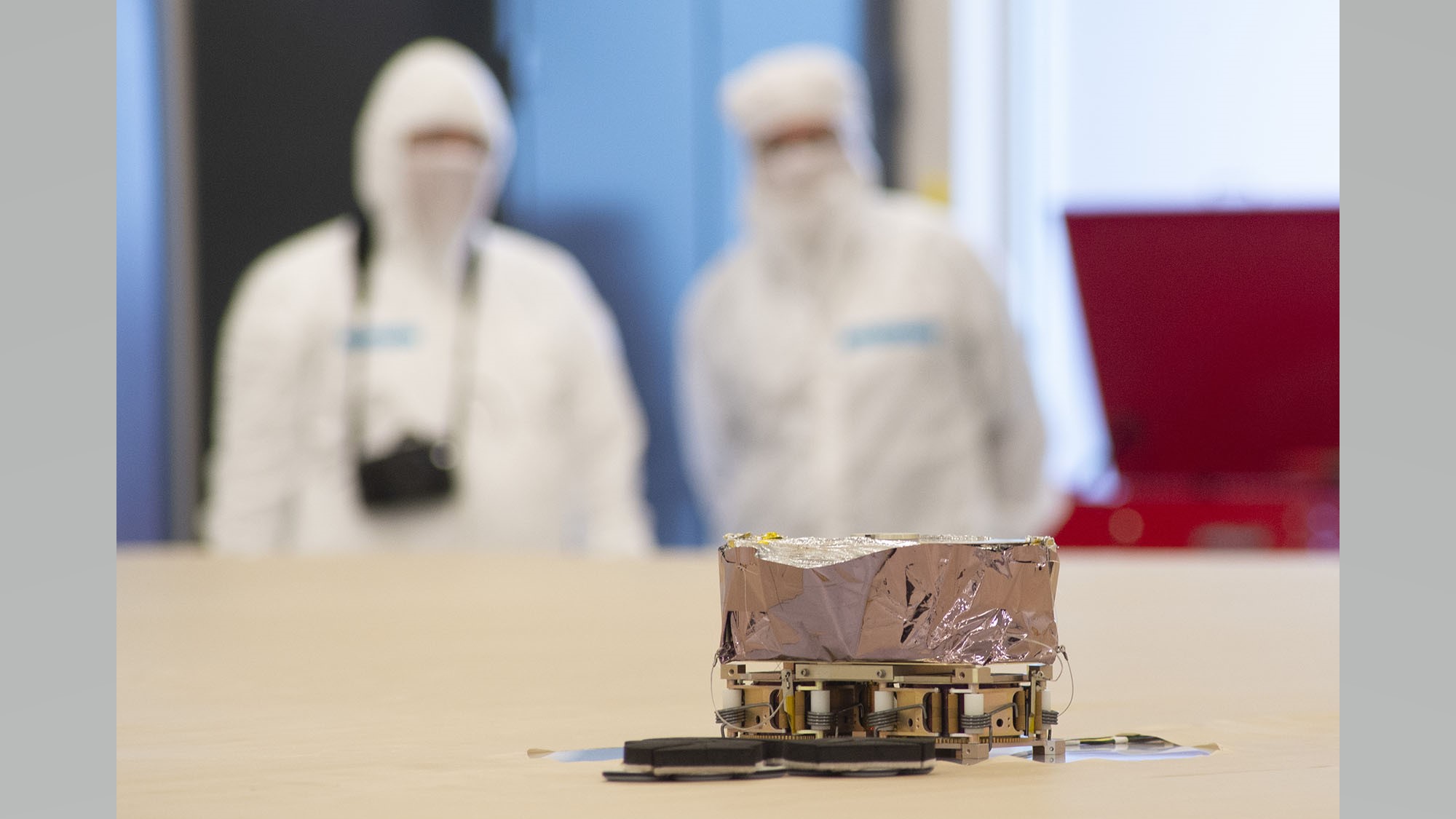NASA's Artemis 1 mission will carry an asteroid-bound solar sail
The cubesat will also use a lunar gravitational assist to catch up to asteroid 2020 GE in 2023.

NASA's coming megarocket launch isn't just going to the moon, it's going far beyond that — some of its secondary payloads far, far beyond.
The primary goal of the Artemis 1 mission is the first integrated test of NASA's new Space Launch System (SLS) rocket and Orion capsule, but 10 cubesats will also be hitching a ride to space. And one of them is headed for an asteroid.
The Near-Earth Asteroid (NEA) Scout mission — a joint project between NASA's Marshall Space Flight Center (MSFC) in Huntsville, Alabama, and NASA's Jet Propulsion Laboratory (JPL) in Pasadena, California — will see a cubesat use a solar sail to fly to an asteroid, which it will image in detail.
Related: The greatest asteroid missions of all time!
"The genesis of this project was a question: Can we really use a tiny spacecraft to do deep space missions and produce useful science at a low cost?" Les Johnson, the mission's principal technology investigator at MSFC, said in a statement. "This is a huge challenge. For asteroid characterization missions, there's simply not enough room on a cubesat for large propulsion systems and the fuel they require."
NEA Scout will be traveling to asteroid 2020 GE, a small asteroid about 60 feet (18 meters) across that circles the sun once every 368 days. In order to get to the space rock, the cubesat will swing past the moon for a gravitational assist, as well as the aforementioned solar sail, which measures 925 square feet (86 square meters).
Solar sails use the force of light particles from the sun as a propellant instead of a liquid or solid fuel, which ultimately frees up more mass on spacecraft. (NEA Scout specifically does carry small thrusters to power certain maneuvers as well.)
Breaking space news, the latest updates on rocket launches, skywatching events and more!
Once NEA Scout arrives at the asteroid in 2023, the spacecraft will use its onboard cameras to image the space rock, studying its shape, rotation, debris field and characteristics of its surface.
"NEA Scout will accomplish probably the slowest flyby of an asteroid ever — at a relative speed of less than 100 feet [30 meters] per second," Julie Castillo-Rogez, the mission's principal science investigator at JPL, said in a statement. "This will give us a few hours to gather invaluable science and allow us to see what asteroids of this class look like up close."
The mission will mark the first time scientists have studied in detail any member of the smallest class of asteroids, 330 feet (100 meters) or less in diameter, which "will help close gaps in knowledge about near-Earth asteroids," according to NASA.
And scientists have two motivations to close such gaps. First, asteroids represent rubble from the formation of planets so can shed light on the history of the solar system, and then of course there's the ever-present possibility of an asteroid colliding with Earth, an event scientists would like to understand well enough to perhaps prevent.
Follow Stefanie Waldek on Twitter @StefanieWaldek. Follow us on Twitter @Spacedotcom and on Facebook.

Space.com contributing writer Stefanie Waldek is a self-taught space nerd and aviation geek who is passionate about all things spaceflight and astronomy. With a background in travel and design journalism, as well as a Bachelor of Arts degree from New York University, she specializes in the budding space tourism industry and Earth-based astrotourism. In her free time, you can find her watching rocket launches or looking up at the stars, wondering what is out there. Learn more about her work at www.stefaniewaldek.com.


